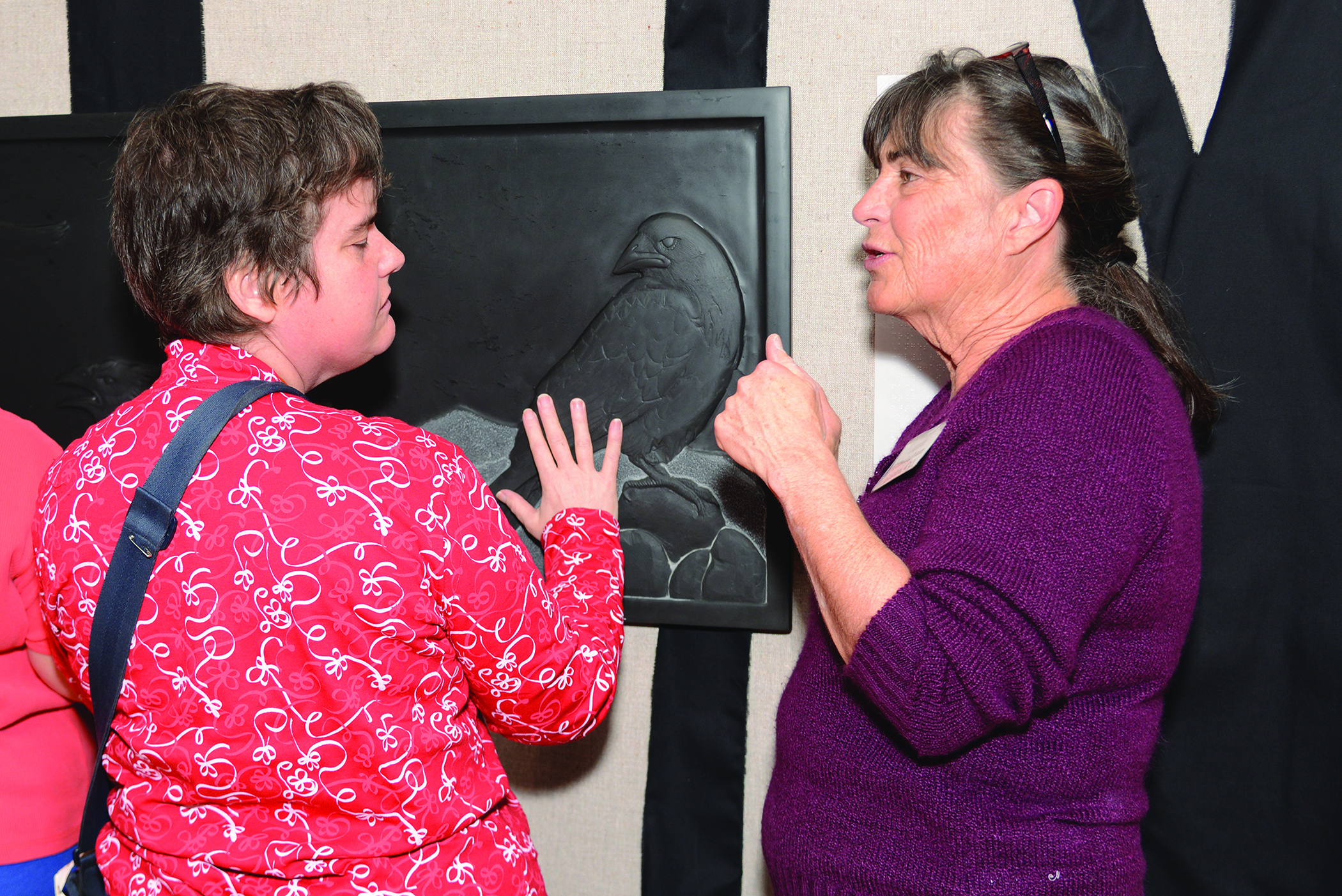
Ann Cunningham offers a verbal description of her slate sculpture while an Art Beyond Sight participant touches the Forest Folklore artwork.
For me, May 19-20, 2017, marked the beginning of the Woodson Art Museum’s exploration toward developing a tactile art installation. For others, the Museum’s journey into the realm of touchable art began with artist Ann Cunningham’s winter 2015-16 Forest Folklore exhibition or perhaps when the Art Beyond Sight program for individuals with low vision and blindness launched in 2006. I became convinced of the Museum’s need for a dedicated tactile art installation in May 2017, when former curator of exhibitions Andy McGivern and I attended a National Federation for the Blind Tactile Art and Tactile Graphics Symposium in Boulder, Colorado. I’m excited and proud to say that less than two years later, the Woodson Art Museum’s inaugural tactile art exhibition, In Touch with Art: Tactile Sculpture, opens to the public on Saturday, March 2.
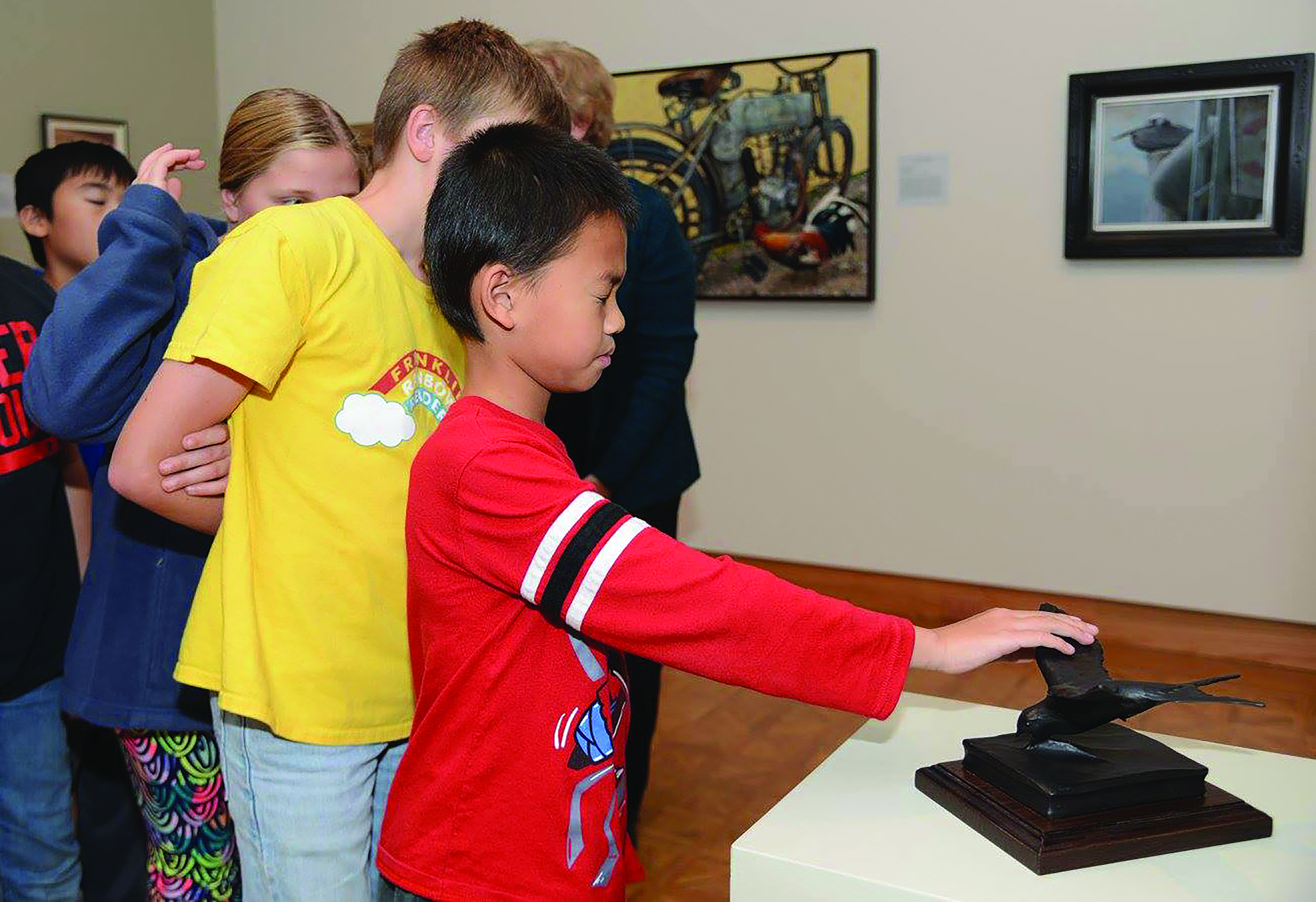
A visiting student closed his eyes to experience Ann Cunningham’s 2017 Birds in Art tactile sculpture during a field trip to the Museum.
I’ve enjoyed working on the tactile art exhibition, due, in large part, to the people involved in the project – coworkers at the Museum, participants who previewed and assessed the proposed installation following a recent Art Beyond Sight program, community partner and blind and visually impaired consultant Joan Wagner, and artist advisor Ann Cunningham.
Birds in Art artist and tactile sculptor Ann Cunningham worked with Museum staff members throughout this endeavor, encouraging and guiding our efforts to make art appreciation through touch a reality for visitors. Ann’s enthusiasm for and expertise in inclusive art experiences inspired and informed Woodson Art Museum staff and visitors for several years.
Ann visited Wausau in June 2017 to help us get the latest ball rolling; we considered our objectives and logistics for a possible tactile art installation, determining that a modest but manageable grouping of touchable avian-themed sculptures drawn from the Museum’s collection was feasible and realistic. Without the support and shared vision of curator of collections Jane Weinke, this exhibition wouldn’t have been realized. Jane’s careful consideration of potential exhibition sculpture included each artwork’s overall stability, medium, artist intent, and educational potential.
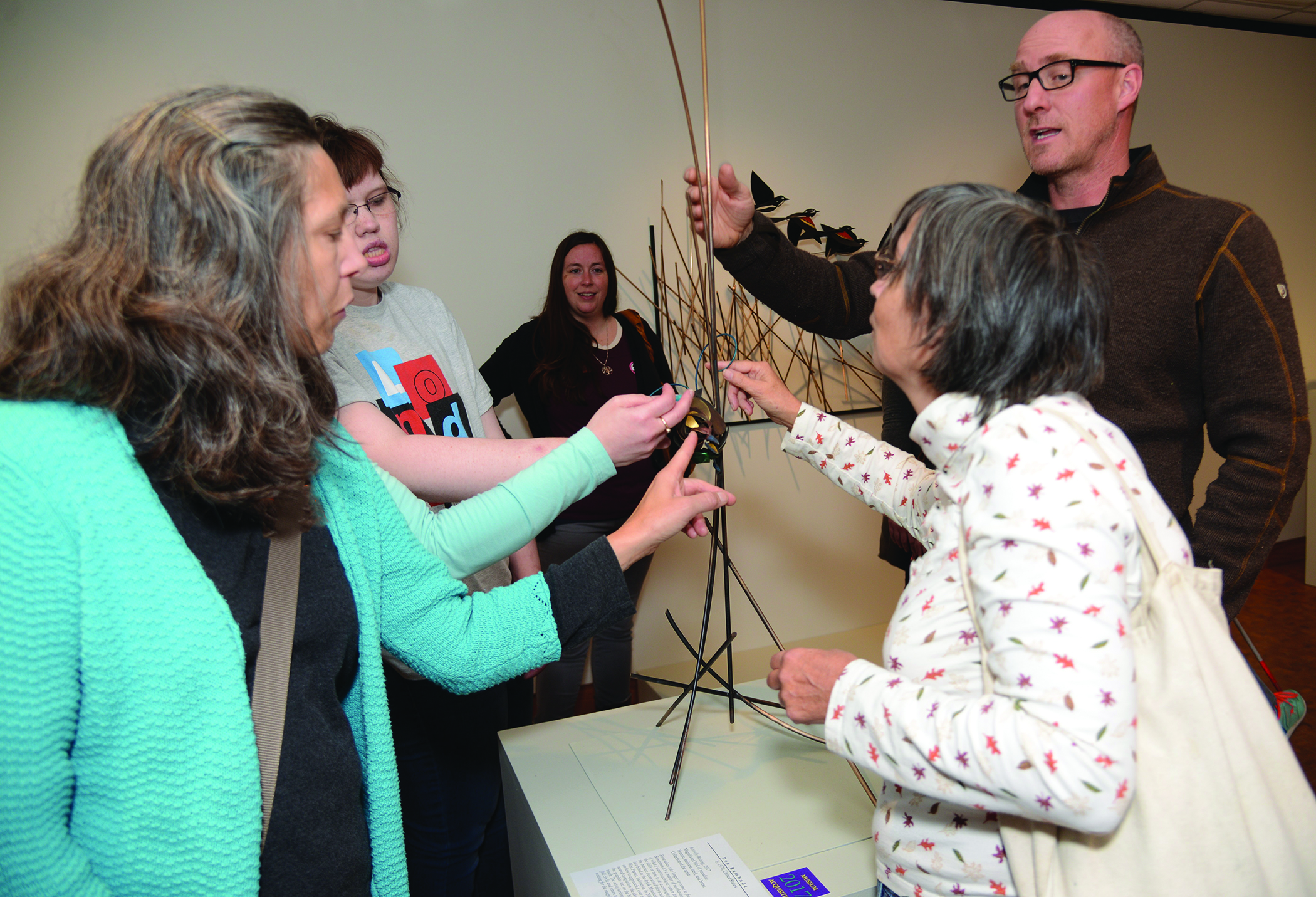
Master Artist Don Rambadt shares his sculpture during an Art Beyond Sight program.
Working with Ann, we explored the “teachable moments” an artwork could present for a visitor with limited vision or blindness to gain insights into broader contexts such as art processes, biology, and the range of aesthetics observed in visual art. A poignant reminder and motivator during these considerations occurred during an Art Beyond Sight program with 2017 Birds in Art Master Artist Don Rambadt, who introduced his sculpture to participants in the gallery. During his verbal description of an artwork, Don helped each person locate and feel the subject’s feet, to which one individual responded “birds have feet?” This “aha!” moment illustrated how significant the impact of tactile art experiences can be. It was later revealed that despite her many years as a curious, well-informed individual with visual impairment, her knowledge of bird anatomy did not include feet. Wings? Yes, they’re a key ingredient to flight, but this other key feature had been omitted from a lifetime of relying on verbal descriptions.
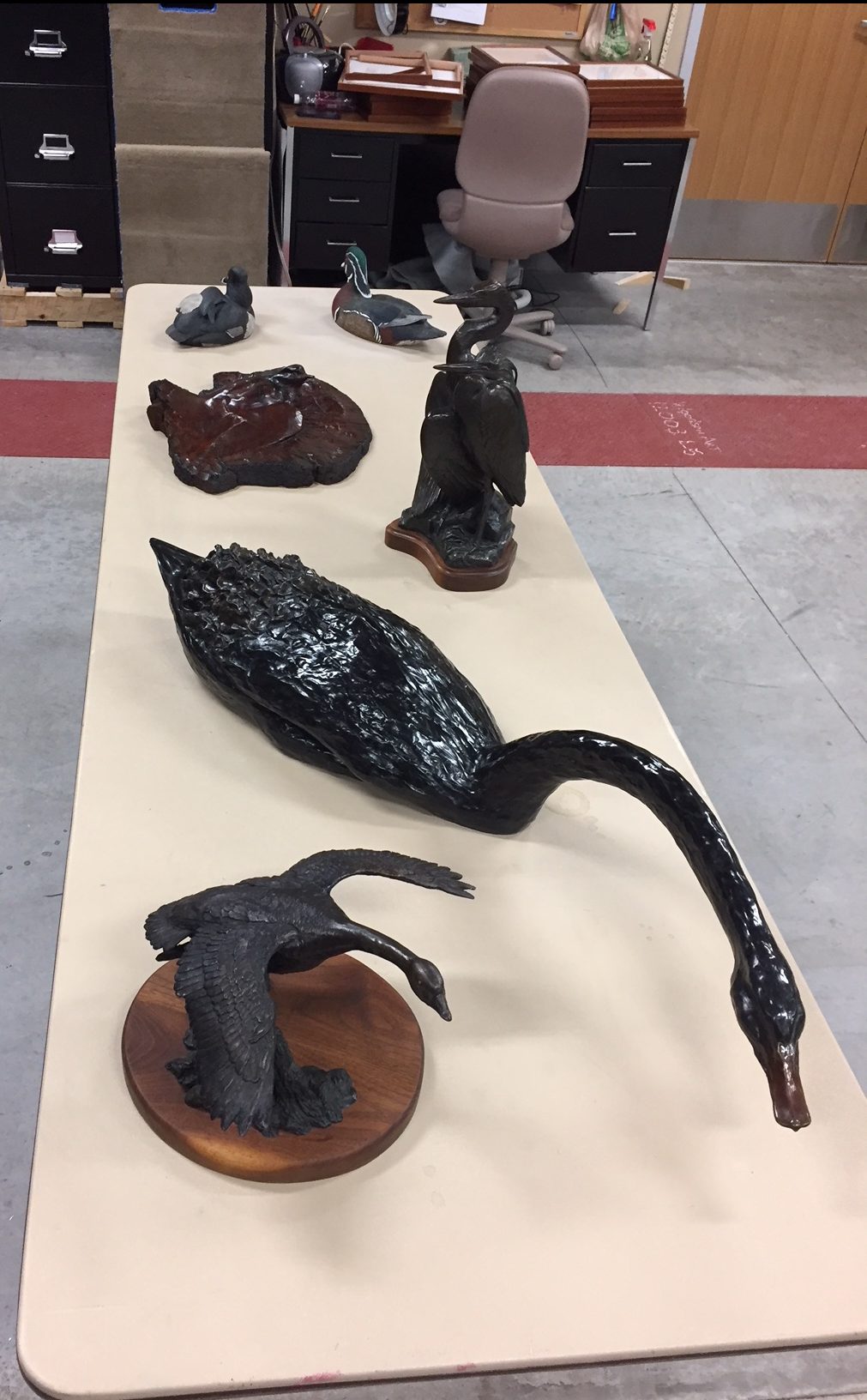
Museum staff presented tactile art candidates in a collections vault for coworkers to explore through touch.
While writing interpretive text for In Touch with Art sculptures, several important components emerged: comparisons of abstraction versus realism, avian behavior and physiology, and the sounds of familiar birds. Once Jane, Andy, assistant director Matt Foss, Ann, and I selected the first set of potential tactile sculptures, we invited coworkers to close their eyes, touch the artwork, and listen as we offered verbal descriptions to guide their tactile introductions to the sculpture.
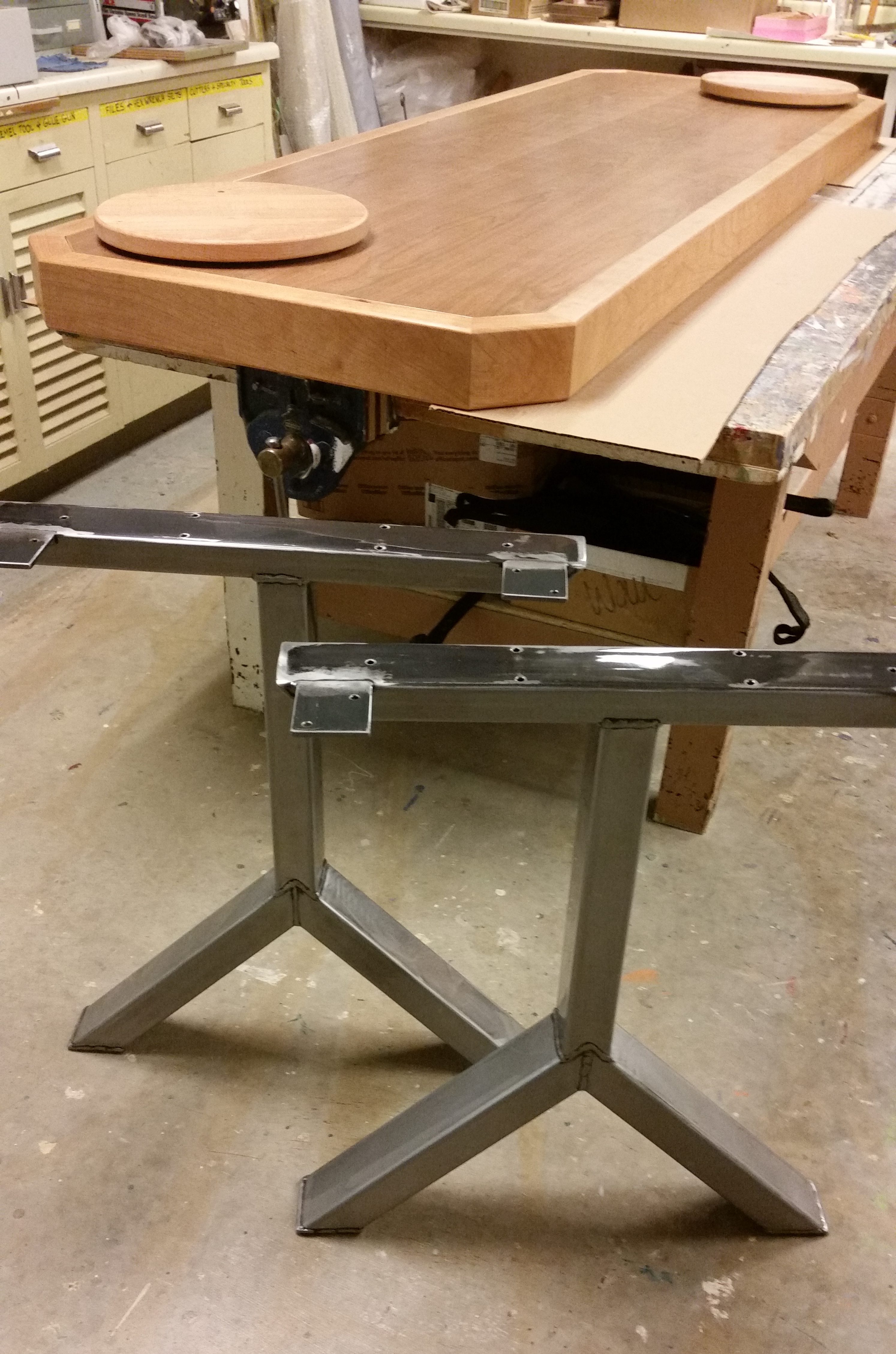
Tactile art table nearing completion in the Museum’s workshop.
We used staff feedback to craft descriptive labels, available in braille and large-format font, and audio recordings, made accessible for visitors with visual impairment via Pen Friend devices, which guide visitors through In Touch with Art.
When tasked with designing a table for the sculpture installation, which ensures artwork safety and makes it accessible and appealing for all visitors, Museum facilities manager Dave Jones rose to the challenge. Working with Matt and Andy to source materials, Dave built a tabletop to accommodate the five sculptures, which sits on unobtrusive, but stable, steel legs. Dave added two rotating platforms, enabling viewers to experience sculpture “in the round,” also affording more opportunities to observe the gestures and stories of the subjects.
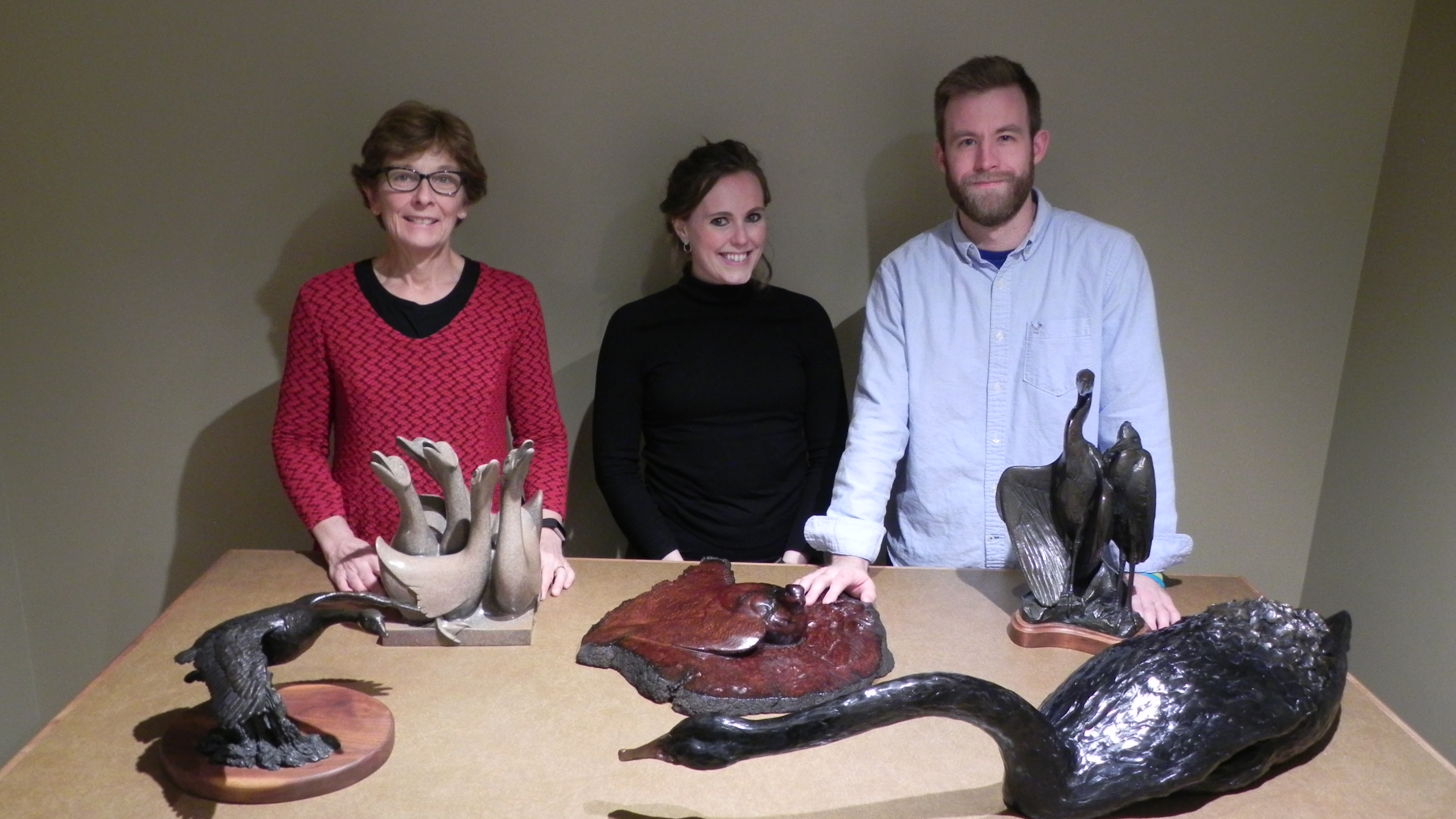
Woodson Art Museum staff with tactile sculpture.
The creative problem solving required of staff and the Museum’s determined efforts to pursue accessible visual art experiences for all have proved enormously gratifying. I’m optimistic this new addition to the Woodson Art Museum’s offerings will prove valuable for all visitors; I look forward to exploring the potential of hands-on art appreciation with a variety of audiences.
We’re eager to share and learn from visitors who experience our inaugural tactile art installation and hope you’ll join us Thursday, March 7 through Saturday, March 9, for visiting artist Ann Cunningham’s programs complementing In Touch with Art.




